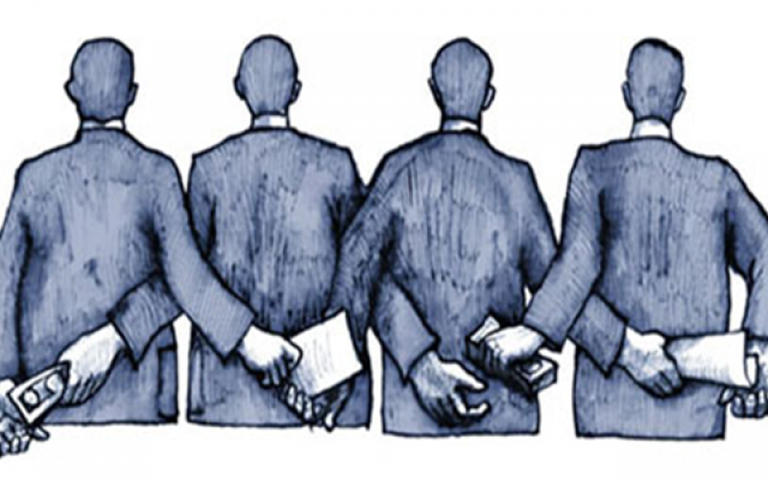Subsidies: The Cost of Government Intervention
Cronyism vs. Free Exchange
Dr. Patrick Newman discussed cronyism in America and the history that has impacted our nation. Dr. Newman defined cronyism as “government intervention that benefits special interests at the expense of the public.” Throughout this course, we have discussed the idea of free exchange, which is the concept that two parties will engage in a transaction if both will be better off because of it. However, cronyism is not something that benefits society as a whole. It benefits special interests, oftentimes of those who are in power, while hurting the general public. In cronyism, a specific group wants specific policy, and they use their power to get it, even if that includes bribery. An early example of this in America is the transcontinental railroads.
The Foundation of the Railroad
In the 1850s, Congress decided a transcontinental railroad was needed and agreed to subsidize the construction with free land and loans. However, they had not decided which regions to send the railroad through. After Abraham Lincoln was elected president in 1861, the Republicans had full control of the senate. The United States had recently acquired California, and the Republicans decided they wanted a railroad in northern California to prevent the state from seceding. In addition, there were four merchants, dubbed the “Big 4”, who wanted to make money by building the railroad. They did not want to manage the railroad but wanted the profits from building it, and they were all corrupt. This was the foundation that was laid for the Central Pacific and Union Pacific Railroads.
The Central Pacific and Union Pacific
The Central Pacific of California was chartered by California in 1861. Leland Stanford was the president of the railroad, as well as governor of California in 1862 and 1862. He was one of the Big 4 heavily involved in the construction of the transcontinental railroad. Lobbyists were dispatched to Washington, D.C. and Congressmen were given Central Pacific stock as bribes. They also used seductive lobbyesses to influence Congressman in favor of Central Pacific. Together, this led to the decision to start building the Central Pacific from San Francisco and meet another railroad eastward.
The Union Pacific was the other railroad. Congress decided to charter its own railroad, and it started in Nebraska. It fell into the hands of Oakes Ames, who was the owner of a shovels company, as well as conveniently on the railroad committee. In addition, his brother was the president of the Union Pacific.
For the Profit
The promoters of the railroad did not actually want to manage the railroad; they wanted to make a profit from it. Ames and the Big 4 owned construction companies that overcharged the railroads for construction expenses. In the 1870s, after construction was completed, it was revealed that the Union Pacific company increased costs by 50 percent and had a rate of return of 480 percent to 610 percent. The Central Pacific burned its books shortly after to avoid being exposed like the Union Pacific was. Because of the loans these companies were getting from the government, this corruption was at the expense of the taxpayers. In the end, the Union Pacific received $27 million in loans, and the Central pacific received $26 million.
The Deficiencies
The two railroads were completed in 1869, five years later, and met in Promontory Point, Utah. However, the quality of the railroad was extremely deficient. The companies were not motivated to build efficiently or effectively. In 1869, the combined railroad was technically only two-thirds completed because it needed to be repaired. The land had been hastily graded, the track had been laid on uncleared snow, the roadbeds were not level, and the tunnels made through mountains were too narrow for a train to pass through. This project allowed the construction companies to prosper while the railroads dug themselves deeper into debt with the government and banks.
Discipline of Profit and Loss
Along with the topics we covered last week with Dr. Fulsom, the details of the transcontinental railroad endeavor show how much taxpayer infusion weakens the ability of profit and loss to discipline. An irreplaceable benefit of the free market is that entrepreneurs and businesses are disciplined by profit and loss. They are using their own resources to fulfill a need, and if they hit a point of losing resources, it is their sole responsibility to pivot and protect themselves. Projects that are subsidized by the government do not have this discipline and therefore do not have a stake in the quality of their work.
In addition, entrepreneurs are required to find a market that has a need and fill it. Otherwise, they will not survive. However, in the case of the transcontinental railroad and other subsidized projects, the government started the projects before there was a demand for it. The government tried to create a market for something that entrepreneurs and consumers were not ready for. If the market does not want to build something, it is not actually needed. It can’t be said that some venture needs to happen if, in reality, it would not be profitable. Herein lies the value of the free market and waiting for market development before pursuing a project.
